NIL
Report: Opendorse, Teamworks reveal $16 million Day 1 rev-share distribution to players, staggering June numbers
The era of revenue sharing is here, opening on July 1st. Since then, Opendorse and Teamworks, both of which are systems that schools are using to distribute that rev-share to athletes, have told On3’s Pete Nakos and Yahoo Sports’ Ross Dellenger that there are some staggering numbers. Between Opendorse and Teamworks, Dellenger reports that more […]

The era of revenue sharing is here, opening on July 1st. Since then, Opendorse and Teamworks, both of which are systems that schools are using to distribute that rev-share to athletes, have told On3’s Pete Nakos and Yahoo Sports’ Ross Dellenger that there are some staggering numbers.
Between Opendorse and Teamworks, Dellenger reports that more than $16 million was distributed from schools to student-athletes, and Nakos reported Opendorse distributed $10 million on July 1. That, notably, doesn’t include any information on distribution from the Big 12 and Big Ten, who reached an agreement to distribute through PayPal, and PayPal hasn’t shared any of that information to this point.
However, it goes beyond those rev-share numbers, making $16 million seem like a relatively small figure. Teamworks also tells Dellenger that there were massive June numbers being paid to student-athletes through collectives. That’s over $71 million to athletes in June. The reason that number got so high is likely due to schools and collectives front-loading payments before the House settlement took effect on July 1st.
The House settlement allows for rev-share. It has also changed enforcement over NIL deals. NIL deals above $600 will need third-party approval and will be sent to a new clearinghouse called NIL Go. That oversight is hoping to set a new market. There is, on top of that, a new enforcement agency in place called the College Sports Commission.
In essence, schools and collectives wanted to get those deals done in June, so there would be less oversight on them. There can still be NIL deals, which are different and unique from rev-share, but they’re going to need approval. There’s also going to be questions about how the College Sports Commission handles these types of investigations.
The House settlement allows for rev-share where each school can distribute as much as $20.5 million to their student-athletes. Schools can distribute that as they wish, but football is expected to receive the most at schools with FBS programs.
The Big Ten, PayPal make payments on behalf of schools
While Ross Dellenger reported that PayPal had not made its figures public, there is some interesting insight that can be gleaned from their process with the Big Ten. In it, Dellenger adds that it is the conference itself making payments on behalf of schools.
Essentially, it works by the schools submitting the athletes who are supposed to receive payments, and for what amount. It is supposed to avoid complications from the school managing those payments. On Tuesday, July 1st, the Big Ten began this process by sharing revenue with athletes from three schools. By the end of the month, all schools will have money distributed.
As was the case with schools using Opendorse and Teamworks, many Big Ten schools front-loaded payments in June. That helped to create those smaller initial distributions on Tuesday.
NIL
NILLION Dollar Idea. How NIL is changing college athletics forever
The following transcript was generated using automated transcription software for the accessibility and convenience of our audience. While we strive for accuracy, the automated process may introduce errors, omissions, or misinterpretations. This transcript is intended as a helpful companion to the original audio and should not be considered a verbatim record. For the most accurate […]
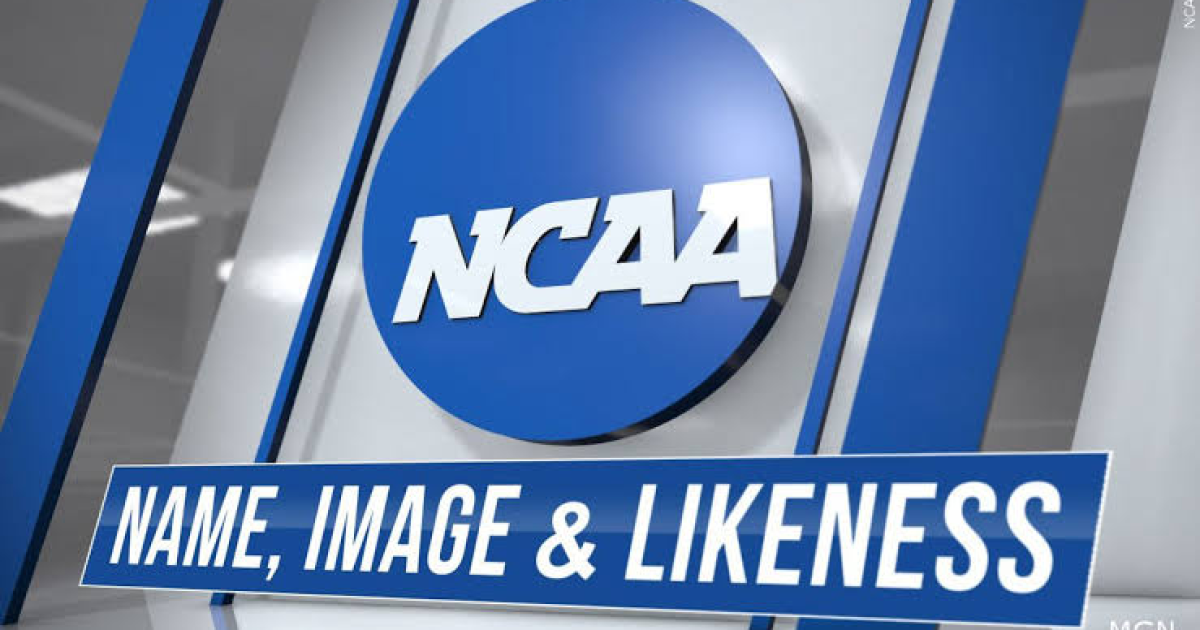
The following transcript was generated using automated transcription software for the accessibility and convenience of our audience. While we strive for accuracy, the automated process may introduce errors, omissions, or misinterpretations. This transcript is intended as a helpful companion to the original audio and should not be considered a verbatim record. For the most accurate representation, please refer to the audio recording.
MICHAEL DUNNE: I’m Michael Dunne. In previous generations, the rules around providing any kind of monetary benefit to college athletes were some of the strictest in the world. This was famously illustrated by an NCAA rule which stated, you could provide a student athlete a bagel during a recruiting visit, but that if you also provided cream cheese that constituted a meal and therefore was a violation. Today, those rules are out the window in the brave new world of name, image, likeness, athletes aren’t just allowed to be paid. They’re actively helped and supported by their universities. Today on the show, you’ll hear from our two local Division One, NCAA universities and their experts on NIL. First, you’ll hear from a business expert on the economics of paying athletes. And then you’ll hear from an athletic director on what it all means on the playing field. Lauren Anderson, the Director of the Warsaw Sports Business Center at the University of Oregon, thanks so much for coming on and talking with us.
LAUREN ANDERSON: Thanks for having me.
MICHAEL DUNNE: Boy, NIL has become this famous acronym. Could you just sort of remind people what NIL is and sort of how it has changed the college landscape from decades ago?
LAUREN ANDERSON: Well, I mean, really what it is it’s basically compensating a student athlete for being used in a marketing campaign or promotion as they are associated with their sport in a university. So, if you think about this, sort of historically, pro athletes have been doing this for a long time, right? You’re a recognizable person, whether it’s a brand or a property or service. They want you to align. They compensate you for using, you know, for coming and doing appearances, for using your picture, or you know your name, image or likeness, name, image or likeness, exactly like use it, using your name or some photos and supporting a product. So, it’s really just about an endorsement and athletes, historically, because of NCAA rules, that was not allowed because it was in violation of some sort of amateur principles. And then, as it rolled out, but then, you know, few years ago, some athletes sued and that it was determined that, yeah, they should be, you know, compensated universities are making a lot of money on the backs of the college athletic programs, and there should be some revenue sharing of that.
MICHAEL DUNNE: Okay? In fact, it’s a great example or illustration on the backs of because, as I understand it, let’s say, you know, we’ll use people who aren’t in college now, but when Bo Nicks played for the University of Oregon, at the Duck Store and other places, they’d be selling a Bo Nix jersey with his name and number on it. And, you know, decades ago, the only people who would get money for that was like the University, and I’m sure Nike and whoever made the jersey did all that stuff. But now an athlete who’s got his or her Jersey in the Duck Store gets some of that, and I guess, does that come from the university, or is there a third party that makes that payment to the athlete?
LAUREN ANDERSON: So, in that example, that usually comes from, like Fanatics, is the big company that does the licensing and sells the deals. So, athletes would sign with Fanatics, and then anything that’s sold is a percentage of someone like an EA Sports. In the video game companies like EA Sports, there’s a lot out there in the press, they just launched college football. 25 every one of the players that wanted to be in that game signed a contract, got a $600 payment and a copy of the game.
MICHAEL DUNNE: Okay, so I want to really kind of get in the weeds a little bit here. So, let’s say, let’s take me, for example. Let’s say I’m a 17-year-old phenom in high school, and I’m and I’m going to go to the University of Texas, or I might go to the University of Florida. Describe the situation now in terms of, could the University of Texas say, Hey, Mike, we want you to play quarterback for us and we’re going to pay you to come here, or is it more we’re going to facilitate opportunities for you to maximize your Name, image and likeness, monetarily?
LAUREN ANDERSON: So, the answer is both, okay. So recently, there was just, it was just passed the House settlement and its house, because that was a player’s name in the lawsuit, has now created an environment where universities and academic institutions, or athletic departments at athletic institutions have the opportunity to distribute up to 20 and a half million dollars to student athletes just because they’re playing okay and to help rightly, you know, like in marketing of the program. So, like you’re in your example, you’re the Texas quarterback. Texas has the right to pay you whatever they want, no obligation to you as a student athlete from that 20 and a half million dollars. Okay, so that’s where you’re seeing some of these quarterbacks or football players making a lot of money. Also, some basketball players. The general breakdown, and every school can distribute that money differently across teams, across players, like if they wanted to give it all to one player, they could. The general breakdown seems in the marketplace to be roughly 75% for football programs, 15% for men’s basketball, usually five for women’s and then five for all the other sports. Generally, I think schools are following the way income comes in, that the percentage of income is really what goes back from that $20 million pot to the student athletes, then how they distribute it beyond that. I mean, I’m sure you’ve seen in the news there are a lot of schools that are hiring general managers for mostly football and men’s basketball to figure out how you’re distributing that money that you then get from your school as your pot. Okay, so then, in addition to that, then there are these NIL deals, which have been going on before, where it’s, you know, sort of an agreement of allow us to use your image, and in exchange for us using your image, we will give you x and some schools are certainly in a position to help facilitate that. More than others, those are being monitored by a third party so that they are sort of fair and equitable. But I will say, from a brand standpoint, what company A thinks is a reasonable amount to pay somebody to endorse something, versus Company B paying that should be at the discretion of the business. So I’m really curious how that monitoring is going to play out.
MICHAEL DUNNE: Yeah. Like anything, there’s two sides. What do proponents of NIL say, and then conversely, what do opponents say about this new landscape?
LAUREN ANDERSON: I mean, it’s, I mean, it’s definitely complicated. Proponents will say athletes deserve to be paid because they are. They are acting on behalf and helping generate resident revenue for institutions. I think the other side of the coin is a conversation about how much and how unregulated it is. So, it’s really the wild west and the implications that it has. You know, not only are 17 or 18 year olds having potentially more money than they’ve ever seen or thought about in their entire life, that could be life changing for them and their families. How are they being supported, educated, resourced to make sure they’re making smart decisions with that money or not right? Like, what is, what are people’s obligations in that regard? And then also, it’s really starting to have a trickle effect into what’s happening in the world of pro sports. So, if you look, the 17th draft pick in this year’s NFL draft by the Cleveland Browns, hasn’t signed his rookie contract, and you know, there’s, there’s some fine print in there about, you know, in the contracts. And this is sort of unprecedented, like nobody, like you don’t sign a contract. But the argument is also, like, this guy is a lot of money, and he doesn’t, he doesn’t, he could sit out for a year and then he could reenter the draft. So, it’s just very interesting. It’s got some interesting implications all the way around. So, I think there’s, there’s always a lot of conversation around, around the table about this. And I think even you know, former student athletes, you know, this house settlement is going to back pay some of them. So, like the last 10 years of student athletes might get, get some money, are going to be entitled to some money for how their name, image and likeness were used. But sort of beyond the 10 plus years those athletes aren’t. And I think some of the athletes have some very different feelings about this, whether it’s good and whether it’s bad. I think the other part of the conversation that some people don’t remember or consider is that, you know, these student athletes and scholarships have $1 value attached to them, so it’s not like five years ago student athletes weren’t getting paid. They weren’t getting money in their bank account. But you know, several $100,000 worth of an education. It’s certainly something that some people would say, well, the person sitting next to them in class is paying $50,000 a year, and you just got a $50,000 a year benefit because you don’t have to pay tuition.
MICHAEL DUNNE: Sure, sure. Looking at your institution, University of Oregon, obviously, it’s pretty easy to kind of look and say, okay, football reigns supreme. Men’s Basketball is probably second. Track and Field fits in there somewhere. Of course, you know? And then Women’s Basketball has been ascendant, but there are a lot of sports. There are a lot of scholarship athletes at the University of Oregon, I’m wondering, you know, I imagine that, you know, there have been athletes who’ve always felt like, well, you know, the football players and the team get gets everything, and we have to kind of settle for the scraps. Does this make it even more so? Because chances are very good, and for people who maybe don’t understand this. You know, we are talking about big money. I brought up the University of Texas earlier, Arch Manning, and you might know that last name at the University of Texas, he’s making $6.8 million in NIL deals. So, I’m just kind of wondering, from what you’ve seen, you know, does this make it more of a haves and have nots, inter college within the university. And then, of course, you know, Oregon’s a big-time program. It’s a lot bigger than the neighbor up the street, Oregon State University. Is there another have and have not within, you know, kind of different institutions?
LAUREN ANDERSON: I mean, yes and no. I mean, I think one of the layers of this is that state laws are different about how institutions can help their student athletes secure deals or not on a state-by-state basis, that’s even different. It makes it hard to have a level playing field nationally, with some of the state rules being different. I do think, you know, I don’t know exactly how Rob Mullins is doing things here at our athletic department, but I do know one thing, like here, compared to other schools, our athletic department is very concerned with making sure that everybody has a great experiences and great resources, and that there’s not a huge imbalance between the football program and the volleyball program and track and field. And everybody that does that, they work very hard to make sure that everybody is having a great experience and has access to great resources. And I know that’s not true at other universities. So, you know, as a Duck, I’m, I’m proud of that, and I’m proud of that for our student athletes. But that being said, there’s only so much money to go around. And you know, like baseball needs some, and track and field needs some. And you know, we’ll, we’ll see how that all goes. I think one part of this that has been interesting, I’d mentioned scholarships, like part of this house settlement, is that there used to be scholarship limits by sport, so there were only a certain number of dollars that each sport could get. Now this also complicates things, but now there are roster limits, but there aren’t limits on scholarship. So, let’s, let’s, let’s say University of Oregon has the funding and wanted to, they could give every one of our I think 500 plus student athletes a full ride. And maybe you’re right, and maybe Oregon state cannot. These are just examples of schools like they would have that opportunity, and that can be a real game changer. And when you get to some of the smaller, more niche sports, you know, it could be different. It’s also different when you look across the big 10 and you say, Ohio State has, I think they have 38 intercollegiate sports for that $20.5 million to go across. And the University of Oregon has 18, yeah, you know, so, so it’s very interesting. And I think, you know, again, I think I’m, I’m proud of the fact that the ducks are very supportive of all the athletes and all their sports. And, you know, my hope is always that all colleges are doing the same, particularly when it comes to women’s sports. Because I think the larger national conversation is people are worried about what’s going to happen with women’s sports, and are there going to be, you know, Title Nine issues, and are people going to, I think that’s the next wave that’s going to be coming with this money and how it’s distributed.
MICHAEL DUNNE: Yeah, although, I mean, obviously, and again, I’m going to bring up two individuals, but, certainly in the women’s game. I mean, obviously Caitlin Clark has made a lot of money on NIL, even when she was at the University of Iowa. And as I understand it, you know, I’m sure others have caught up now, but one of the biggest sorts of monetary winners of NIL is an LSU gymnast, Livy Dunn, who’s, who’s made a lot. I guess it does open up, especially for enterprising athletes, and perhaps with council, there can be a lot of money made, even if you aren’t the starting quarterback at the University of Alabama or Texas, right?
LAUREN ANDERSON: I mean, you can, but if you think about it, I mean, you’ve named just two women, just two exactly right of, like, the millions of women who play collegiate sports, and it’s, you know, arch Manning is, is one of a handful. It is like you’re less than 1% right. Like, if you think about in the football terms, 1% roughly, of college football players go on to play in the NFL with a career span of on average, like, slightly around three years. Like, 1% of those numbers get to play, like it is such a small number of people who are making that really big life changing money. And if you look across the NBA or the NFL or the NWSL, like pro sports, it’s also the same, like, the number of people who, players and athletes who are really achieving that cat is not catastrophic, but astronomical amount of money and endorsements, you know, like, like, a LeBron, right? Like, it’s so small, not everybody is making that money, sure. So, it’s really, it’s really a small percentage. And, you know, Livy Dunn has did something that, you know, she was sort of the first one, yep. And part of her, her appeal was not necessarily all as what she was doing as an athlete, but she had built herself into an influencer, and she had a base of people who followed her for any number of reasons. And then she attracted different brands, and then she grew, grew her following and her fan base. And, you know, one might argue that she’s no different than an actor.
MICHAEL DUNNE: Fascinating. It’s changed so fast already. It’s amazing how quickly it all happened. Lauren Anderson, thank you so much. She’s the director of the Warsaw Sports Business Center at the U of O, thank you again for your expertise and counsel on this.
LAUREN ANDERSON: Absolutely. Thanks for having me.
MICHAEL DUNNE: Now, let’s talk to Oregon State which isn’t in the same stratosphere of college sports as U of O, but still is working hard to make NIL work for them. Brent Blalock, who is the Executive Deputy athletic director for Oregon State University, thanks so much for coming on and talking with us.
BRENT BLAYLOCK: Yes, thanks for having me.
MICHAEL DUNNE: As it works at Oregon State University – how do you manage the name, image, likeness program with the student athletes who come to Oregon State University?
BRENT BLAYLOCK: Yeah, there’s several facets to it. The first and probably the most important, is to empower the student athletes to not only learn more about the opportunities that are out there, but also how to brand themselves, how to communicate with those that are out there about their interests and value that they could bring to potential partners. We want them to do this on their own, or at least be able to do this on their own. So, this is a lifelong skill that they’re taking with them. But the second part to that is also us identifying opportunities for them, using the partners that we have, our networks and others that are supporters of our program, to facilitate some of those opportunities coming to them as well. But in all, our goal for this is for student athletes to be able to take advantage of a unique opportunity and a unique value they have at this time in their life, and in turn, be able to provide that value to our partners and our community members.
MICHAEL DUNNE: Does NIL opportunities for athletes help you and your team recruit athletes to come play at Oregon State University?
BRENT BLAYLOCK: It does to some degree. You know, we, we will always identify and recruit those that are most interested in coming to Oregon State to be a student here, to be a student athlete here, but because of the competitive excellence that we try to provide across all of our programs, and really how we try to help them make that transition from high school into adulthood, and the personal development, the professional development, all the things that come with that. So we want to make sure that we’re always leading with that, and that we’re attracting those that want to be at Oregon State for all the great things that Oregon State has always stood for. But second to that, NIL L is becoming a bigger part of the recruiting process, just because, kind of what we referred to before, this is a unique time for them to maybe capitalize on some value and, more specifically, monetize some value that they may not have other points in their life when you’re you know, the coaches and stuff go out and recruit players To come to Oregon State University, to become student athletes on campus.
MICHAEL DUNNE: I imagine, you know, sitting in those living rooms, talking to parents, talking to athletes. I’m wondering, you know, is NIL climbing up those ranks in terms of, this is the school for me? Obviously, you know, whatever is best fit academically, what also is best fit in terms. Of playing ability, that sort of thing. I’m just wondering, you know, is NIL suddenly becoming a top five consideration for athletes in what you’ve been able to view thus far?
BRENT BLAYLOCK: I absolutely think nationally that it is growing, and it’s still, I mean, we just passed the four-year anniversary of it, so it started from zero, right? So, in a lot of ways, it could only go up. What I will say, specific to Oregon State, is, while we are absolutely proponents of name, image and likeness, it is not something that will lead the conversation in the living room. And quite honestly, we have many conversations with coaches where they say, hey, the parent kept going back to nil, or what’s the number? Or, you know, that was the first thing that they wanted to talk about. But before it was a discussion on team culture and playing time and areas of study, and the campus culture and learning about Corvallis and all those other things. So with the way we do things, NIL is really the icing. It shouldn’t be the cake. And for those that they want to make that the primary driver, there may be some that can be successful with that across the country, but I think what you’re going to find is those are the student athletes that may go to three schools in four years, or maybe have disruptive collegiate careers, because it is based on money and what I know is a lot of times when, when things get challenging, you know, whether that’s in a workout or in a game or whatever it may be, those that rise and then those that are best able to compete are those that are typically there for all the right reasons, but because when you’re getting Hit hard on a football field, you can’t really do a lot and look at your bank account to make you feel better, but you can look at your teammates that you care about and the coaches you believe in, and that can help you get to get you through those moments.
MICHAEL DUNNE: Brent Blalock, who is the Executive Deputy athletic director for Oregon State University, Brent, thank you so much for taking time to talk with us.
BRENT BLAYLOCK: Yeah, you’re quite welcome. I appreciated the time.
MICHAEL DUNNE: That’s the show for today. All episodes of Oregon on the record are available as a podcast at KLCC.org. Tomorrow, on the show, we are talking with a Bend Bulletin reporter about the fire season in Central Oregon, including impacts from drastic cuts to Forest Service and firefighting personnel. I’m Michael Dunn, and this has been Oregon On The Record from KLCC. Thanks for listening.
NIL
An Ohio State Affiliated “minor League Team”
I’ve been thinking about this idea for a while in the wild Wild West of NIL and the transfer portal. The NCAA appears to essentially have no real power or oversight anymore, either. What would stop Ohio State from entering an intentional partnership with a Central Ohio junior college (even paying its staff and coaching the […]

I’ve been thinking about this idea for a while in the wild Wild West of NIL and the transfer portal. The NCAA appears to essentially have no real power or oversight anymore, either.
What would stop Ohio State from entering an intentional partnership with a Central Ohio junior college (even paying its staff and coaching the OSU systems) or a school like Youngstown State and using NIL to create “contracts” with players, where, after Spring ball, if a player isn’t likely to crack the 3 deep, they would play that year at the “minor league” school?
People like Isaiah West or the Armstrong twins or Nick McLarty would essentially be on a year loan to the school… coached by Ohio State system coaches…and getting REPS. That irreplaceable game experience would pay dividends. And the “minor league” school would get a huge benefit from Ohio State fans caring about their team.
You can make sure that classes taken at that school transfer to OSU. And the players are still getting their NIL.
NIL
College GameDay projects headlines from Week 1 matchup between LSU, Clemson
‘College GameDay’ won’t be in Death Valley on August 30th. However, what’s now officially a top-ten matchup between No. 9 LSU and No. 4 Clemson is one that ESPN’s Rece Davis and Pete Thamel think that they could see later on in the season anyways. Davis and Thamel looked at some outcomes and headlines from […]
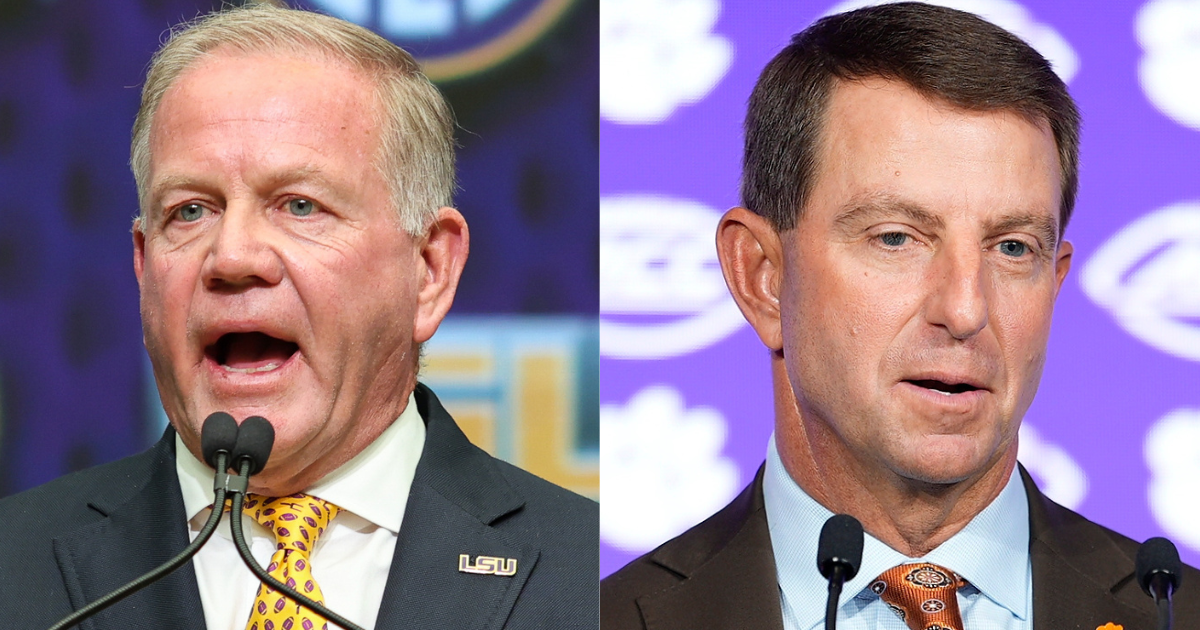
‘College GameDay’ won’t be in Death Valley on August 30th. However, what’s now officially a top-ten matchup between No. 9 LSU and No. 4 Clemson is one that ESPN’s Rece Davis and Pete Thamel think that they could see later on in the season anyways.
Davis and Thamel looked at some outcomes and headlines from some of the top opening games to this upcoming season during the ‘College GameDay Podcast’. They both thought, when it came to this game between the two teams of top-rated Tigers, that this could not just be a game we see again in the playoff but one that could be played for the national championship in the CFP.
“LSU and Clemson? I think the end takeaway is going to be, we might see those two play again in Miami,” stated Davis.
“Yeah,” Thamel agreed. “I’m a big believer in Clemson, as I am in Penn State, this year. But I have no reason to flinch at picking LSU going deep in the playoff right now as we sit here. They have all the key tenets.”
No. 9 LSU vs. No. 4 Clemson is one of three top-ten matchups now set on the schedule for week one along with No. 1 Texas vs. No. 3 Ohio State, which GameDay will be in attendance for in Columbus, on Saturday before No. 6 Notre Dame vs. No. 10 Miami on Sunday. That said, that game may specifically have as much pressure on it as just about any matchup this season, let alone in the opening week, considering the expectations on both sets of Tigers, under Dabo Swinney and Brian Kelly respectively, in their conference standings and in the playoff race. For reference, Clemson (+900 – T-4th) and LSU (+1500 – 7th) are also in the top-ten when it comes to national title odds per BetMGM.
LSU vs. Clemson, pending on what happens in The ‘Shoe, could cause the most reaction and have as much of an effect as about any game could this fall. Still, it might only be the first edition of that matchup as Davis and Thamel each expect it could happen again, with a whole lot more on the line in the second one, in the College Football Playoff.
The Preseason AP Poll is here as the Top-25 rankings were revealed on Monday ahead of the upcoming season in college football. That means kickoff is getting even closer with the year set to open across the country by the end of the month.
Without further ado, let’s dive into the AP Poll Top-25 ahead of kickoff:
1. Texas
2. Penn State
3. Ohio State
4. Clemson
5. Georgia
6. Notre Dame
7. Oregon
8. Alabama
9. LSU
10. Miami
11. Arizona State
12. Illinois
13. South Carolina
14. Michigan
15. Florida
16. SMU
17. Kansas State
18. Oklahoma
19. Texas A&M
20. Indiana
21. Ole Miss
22. Iowa State
23. Texas Tech
24. Tennessee
25. Boise State
Others receiving votes: BYU 156, Utah 144, Baylor 132, Louisville 90, Southern Cal 64, Georgia Tech 63, Missouri 33, Tulane 23, Nebraska 23, UNLV 21, Toledo 13, Auburn 10, James Madison 9, Memphis 9, Florida St. 8, Duke 6, Liberty 5, Navy 5, Iowa 5, TCU 4, Pittsburgh 3, Army 2, Colorado 1, Louisiana-Lafayette 1.
NIL
Top 10 SEC basketball coaches in position for 2025-26: Top coaches return after historic season
The SEC is coming off a historic season which saw record success from non-conference matchups to NCAA Tournament representation. With only two of 16 teams making a change on the bench, there is plenty coaching depth to sort through here. Once year after massive changes, A Buzz Williams departure which led to up-and-coming coach Bucky […]

The SEC is coming off a historic season which saw record success from non-conference matchups to NCAA Tournament representation. With only two of 16 teams making a change on the bench, there is plenty coaching depth to sort through here.
Once year after massive changes, A Buzz Williams departure which led to up-and-coming coach Bucky McMillan headlined the coaching cycle for Texas A&M. Texas also made a change, bringing in Sean Miller to lead the program forward after previous interest.
Ranking the Top 10 coaches in any of the four power conferences is a difficult task, as a multitude of factors determine how the coach is viewed in the moment. There are historical markers throughout a coach’s career which cement them in a certain tier, while recent records and recruiting success play a major factor in remaining on top.
Entering the 2025-26 college basketball season, here is a look at how the Top 10 SEC coaches stack up against their peers in another competitive year.
1. Todd Golden – Florida
Todd Golden currently sits at the top of college basketball, leading Florida to a national championship to cap off a historic season of dominance in the SEC. After going through college basketball’s toughest gauntlet, he proved that his system is the gold standard for others to follow.
Golden utilizes analytics to build out his Florida roster and look for competitive advantages on both ends of the floor. He now looks to repeat his formula with the most coveted advantage in college basketball, continuity, on his side.
2. Nate Oats – Alabama
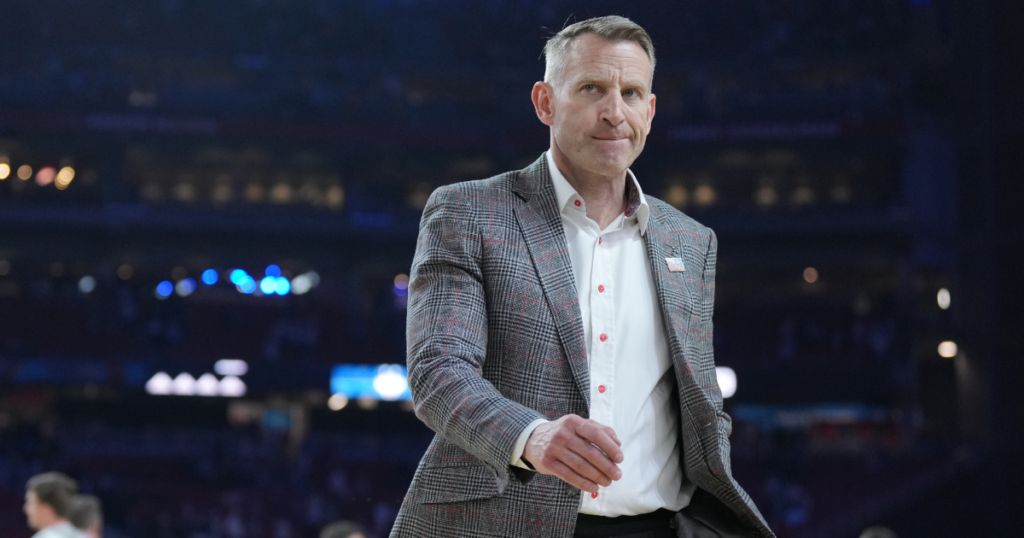
Coming off another successful Alabama season, Nate Oats and have again rebuilt the rotation around a combination of returning players and incoming transfers. The formula also leans on his analytics-focused model, which has brought the program to the top of the sport.
The philosophy behind Oats’ success has brought him into greater conversations about where he stands, still needing to break through with a national championship to fully cement his legacy. However, his success in the SEC over multiple seasons should not be overlooked when evaluating the resume.
3. Bruce Pearl – Auburn
Bruce Pearl has built the Auburn basketball program in his image over the past decade, taking true ownership of the brand. With multiple Final Four trip under his belt there is no question he sits in an elite group of college coaches across the country.
Now tasked with a large-scale rebuild of the roster, Pearl will rely on his team-building success to bring together a unique group of players in his image for a functional rotation. While his X’s and O’s are not often compared to his peers, he is ahead of the game building each roster.
4. Rick Barnes – Tennessee
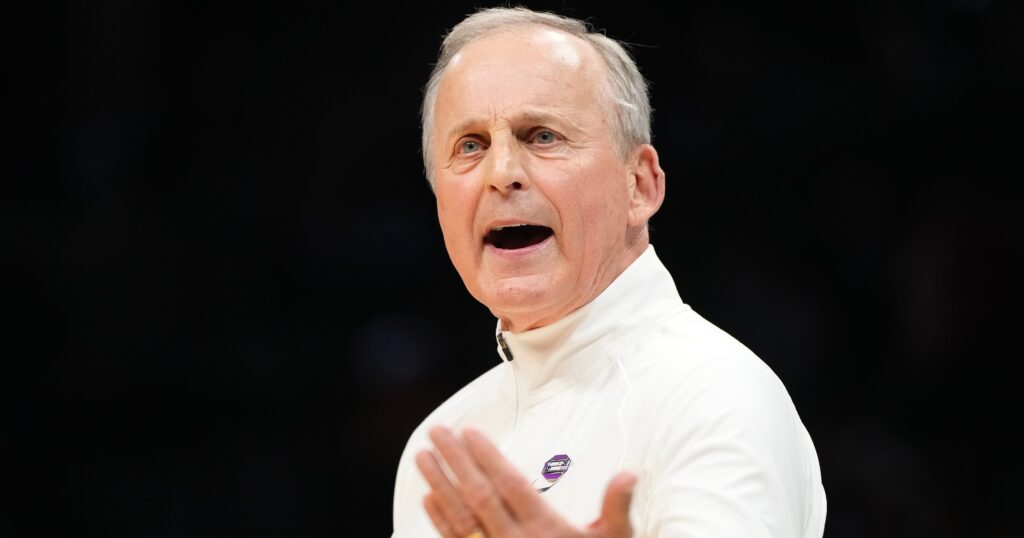
From his time at Texas to Tennessee, Rick Barnes has established himself as one of the best coaches in the sport for years now. Questions about postseason success in recent years hold increasingly little weight compared to the overwhelming body of work building a program.
He continues to string together successful seasons, placing him one breakout postseason performance away from a totally different conversation about him in the grand picture. He has a group plenty talented enough to do it, with a combination of freshmen upside and veteran presence ready to mold into his defensive system.
5. Mark Pope – Kentucky
When Mark Pope first arrived at Kentucky, the reviews were all over the place. While he was Big Blue Nation’s own, he entered with no NCAA Tournament success and a far less impressive resume than the numerous candidates they publicly swung on and missed. All that quickly went into the rearview mirror when his exciting brand hit the floor.
The up-tempo style matches the modern game perfectly, and his focus on team building puts him near the top of the conference in that category. Now with top-end freshmen set to join his impressive group of transfer talent which fills need, he is primed to show his full potential as a coach.
6. John Calipari – Arkansas
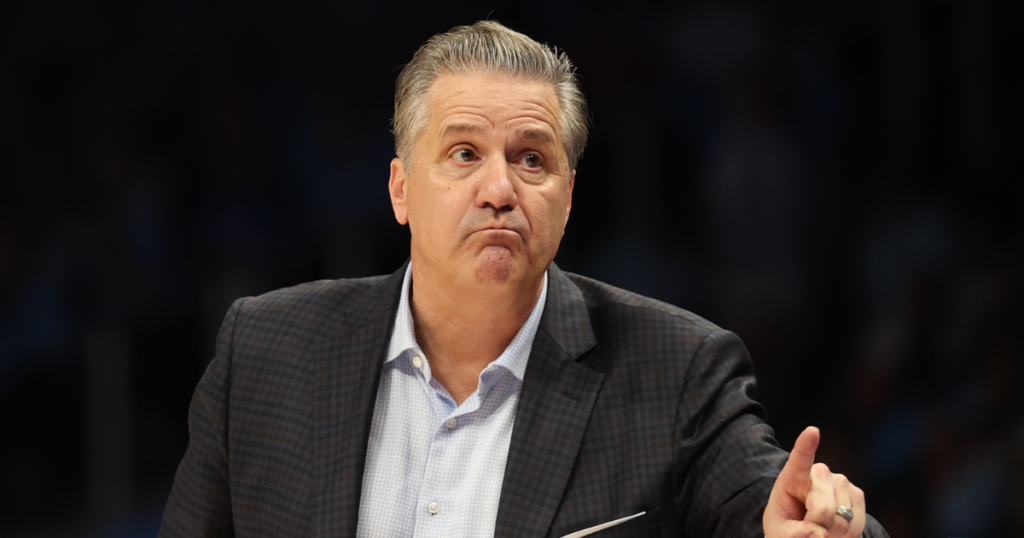
After leaving Kentucky for Arkansas, there was plenty pressure on John Calipari to change his ways which got him to the top of the game. However, a slide in results meant he needed to adapt, something that a new program gave him the best platform to accomplish.
Early returns were a mixed bag, but the final stretch of the postseason led to widespread optimism as he gets a chance to learn from his first new roster by adapting again this offseason. The roster Arkansas now brings to the table now comes much closer to resembling other successful programs.
7. Chris Beard – Ole Miss
Another coach who found himself at the top of many lists just a few seasons ago, Chris Beard has dealt with off-court setbacks to his career. After leaving Texas, he landed at Ole Miss with a chance to rehab his image and bring back a program. He accomplished big strides toward his goal last season.
Now tasked with repeating success in college basketball’s most competitive conference, he can eliminate all doubt about the program’s ability to compete by doubling down on success with a unique roster. However, with the razor-thin margins, he also risks sliding down if the program does not have another big year.
8. Sean Miller – Texas

Texas finally got their guy this offseason, hiring Sean Miller to lead the program. They previously had interest in the coach, but went another direction just a few years ago. After being caught up in the drama which swept across college basketball while at Arizona, he has rehabbed his image during a second stint at Xavier.
There is no question that he is among the top group of college basketball coaches, and has been for many years. He now gets back to a top tier program with the opportunity to get in the mix with top NIL funds in the sport’s best conference.
Chris Jans continues to put together good seasons as a head coach. Perhaps an underrated trait, he has four-straight NCAA Tournament appearances dating back before he landed the Mississippi State job. While his method is not as pretty to watch as some, the commitment to putting big bodies on the floor and dominating the opposition has served Mississippi State well.
Sustained success is good enough to keep Jans in the mix with all these coaches, but he must also hold on with a new-look roster to hold steady. A deep NCAA Tournament run would give him another boost in showing the world his value.
10. Dennis Gates – Missouri
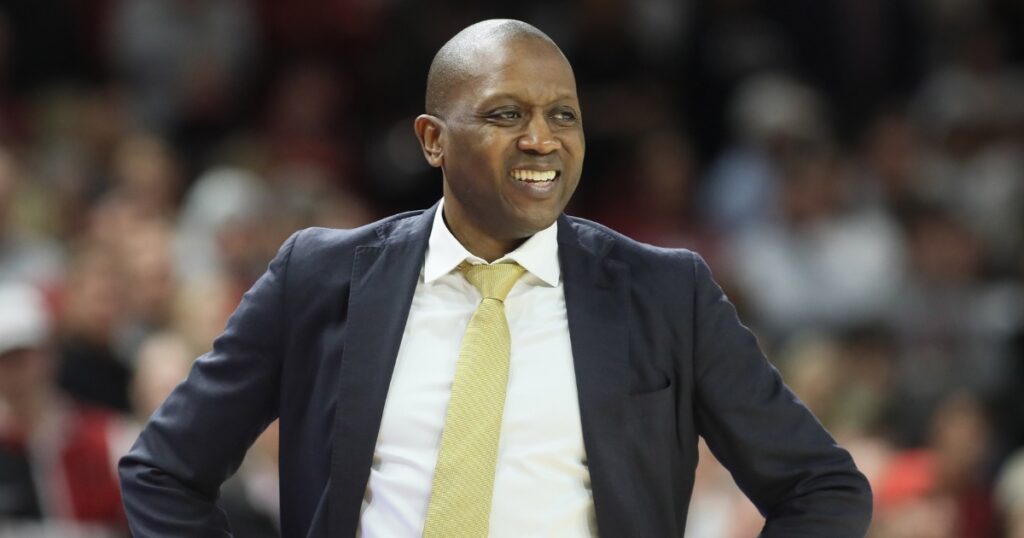
Dennis Gates has seen a mixed bag during his time at Missouri, seeing historic lows, but offsetting them with surprising high-points. He is an ultimate culture-builder with an image for his basketball team which can often help raise the level of each individual part.
There is more for him to prove moving forward, with consistency first among them. Another NCAA Tournament run could solidify him in this mix, but another fall would provide plenty room for others to jump in line.
SEC coaches looking to break into Top 10
Mike White – Georgia
Matt McMahon – LSU
Porter Moser – Oklahoma
Lamont Paris – South Carolina
Bucky McMillan – Texas A&M
Mark Byington – Vanderbilt
Listed alphabetically by school.
There is no shortage of talented SEC coaches ready to assert themselves in the conversation for a Top 10 spot within the 2025-26 season. The deep list of coaches is sure to present plenty surprises, with NCAA Tournament teams coming from this group.
NIL
Former Texas football standout issues blunt warning to players focused on NIL
Former Texas Longhorn, College Football Hall of Famer and 14-year NFL veteran Derrick Johnson is convinced that Name, Image and Likeness money can impact the locker room in a negative way if players aren’t careful. Johnson likley would have been one of the most valued players in college football if NIL opportunities were available during […]

Former Texas Longhorn, College Football Hall of Famer and 14-year NFL veteran Derrick Johnson is convinced that Name, Image and Likeness money can impact the locker room in a negative way if players aren’t careful.
Johnson likley would have been one of the most valued players in college football if NIL opportunities were available during his standout career.
The Waco, Texas, native was a two-time All-American and the Big 12’s Defensive Player of the Year in 2004, the same year in which he earned the Bronko Nagurski Trophy and Dick Butkus awards.
Johnson sits first all-time in tackles for loss and third all-time in career tackles among Texas defenders.
After becoming a first-round pick in 2005 and spending the next 14 years in the NFL, Johnson returned to Texas to complete his degree in Community and Youth Studies before delivering the school’s commencement speech in 2024.
College sports has changed drastically since Johnson took the field in Austin, and the Longhorns are among the biggest spenders in the NIL space.
“I think schools have been riding the coattails of the athletes for a long time and, respectively, that was how the structure was set up,” Johnson told the Chron’s Leah Vann. “It is what it is. I made the school a lot of money, which is no regret at all. They gave me a free education, and I appreciated it at that time. It’s different times.”
NIL funds aren’t evenly distributed. Stars can demand millions per year while rotational players and backups are making considerably less. That reality, according to Johnson, can create a clog in the locker room if players don’t think professionally.
“I’m sure it does (impact the locker room dynamic) because they’re not versed and mature enough to take their feelings out of it,” Johnson said. “These are professional athletes, 18 or not, they’re professional athletes… Some guys are getting a lot more than others and they shouldn’t be because a guy’s like, ‘Man, I’m only getting $100,000 and then this guy’s getting $800,000, and I’m better than this person.'”
“If you’re really that good, don’t count people’s money. That’s something that I learned in the NFL,” Johnson said.
Johnson urged players to take a long-term approach in their college careers. While NIL packages can provide a kick start to generational wealth, the path as a professional can be more rewarding.
“‘What am I doing to make myself a better football player?'” Johnson said. “If you’ve got a nice highlight, if you’re making a little money. That’s the highlight. That’s not the cake.”
NIL
WVSSAC new ruling on student athlete name and likeness now in effect
CHARLESTON, W.Va. (WVVA) – Athletes around the mountain state will now be able to receive payments for their name and likeness. The West Virginia Secondary School Activities Commission first approved this NIL policy back in July and it went into effect this past Friday. NIL has swept through college athletics since 2021 however there are […]


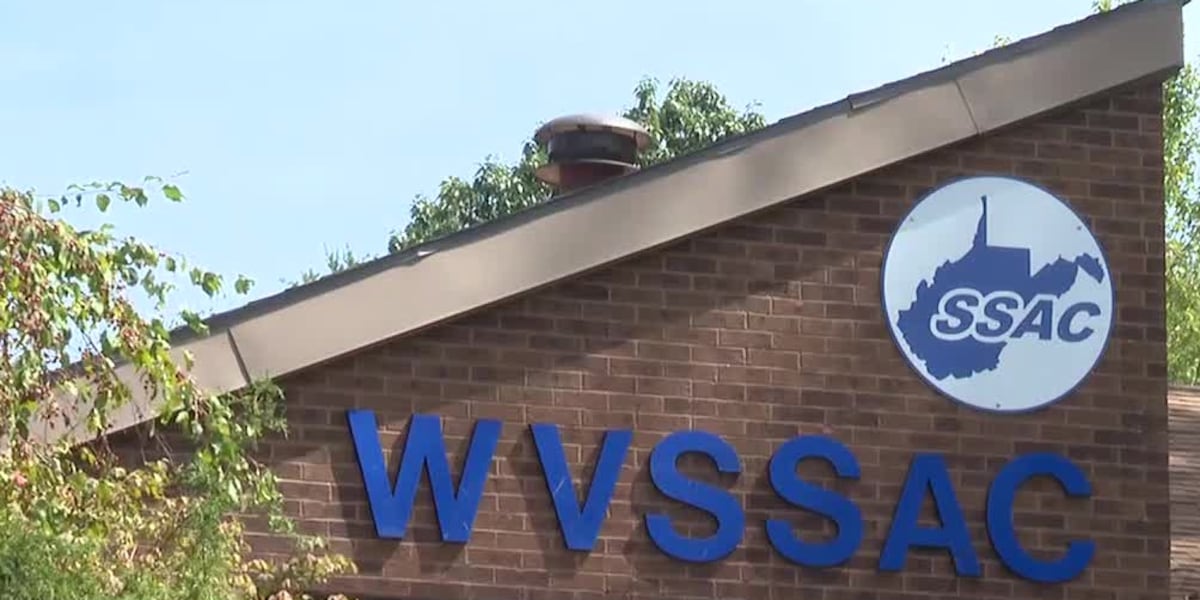
CHARLESTON, W.Va. (WVVA) – Athletes around the mountain state will now be able to receive payments for their name and likeness.
The West Virginia Secondary School Activities Commission first approved this NIL policy back in July and it went into effect this past Friday.
NIL has swept through college athletics since 2021 however there are caveats for players to get paid.
If a player uses their likeness for a commercial, for example, there can be no references to their school and cannot be wearing a school logo or uniform in order to protect their eligibility as an amateur athlete.
No school employees, including coaches, can be involved in a student’s use of their NIL.
Athletes and parents are encouraged to reach out to the WVSSAC Director of Compliance for questions to ensure no issues arise with eligibility.
Questions can be emails to jason.bankston@wvssac.org.
Copyright 2025 WVVA. All rights reserved.
-

 Health1 week ago
Health1 week agoThe Women Driving A New Era In U.S. Ski & Snowboard
-

 High School Sports2 weeks ago
High School Sports2 weeks ago100 days to men's college basketball
-

 Technology2 weeks ago
Technology2 weeks agoAlly Runs New Game Plan in WNBA All-Star Rookie Debut
-

 NIL2 weeks ago
NIL2 weeks agoESPN Announces 'dont wait run fast' by mgk as New College Football Anthem for 2025
-

 College Sports3 weeks ago
College Sports3 weeks agoBYU Basketball Adds Aleksej Kostic to 2025
-

 College Sports2 weeks ago
College Sports2 weeks agoCity rows to sporting destination goal on boats of new complexes & old strengths
-
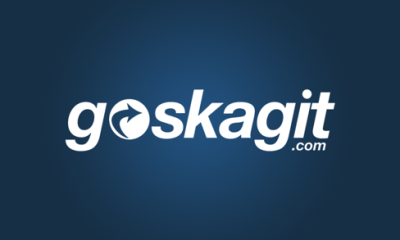
 Sports2 weeks ago
Sports2 weeks agoNtekpere honored as Second Team Academic All-American | APG State News
-

 Health2 weeks ago
Health2 weeks agoTrump administration investigates Oregon's transgender athlete policies
-

 Rec Sports6 days ago
Rec Sports6 days agoSwimming & Diving Comments on the Rules – 2025-26
-

 Sports3 weeks ago
Sports3 weeks agoMore State Schools of the Year
































